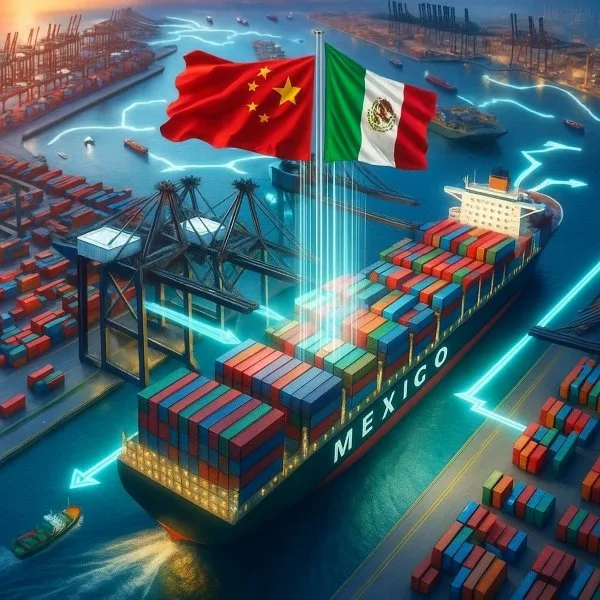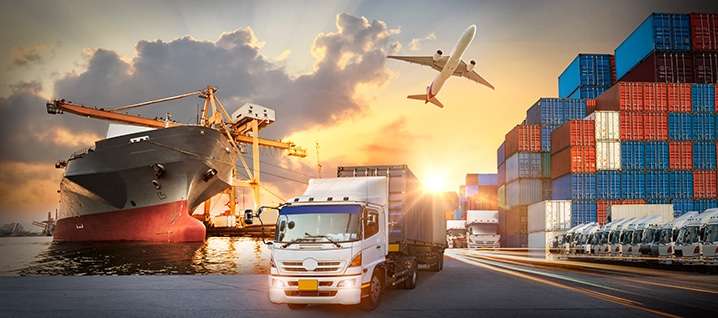- By TOP CHINA FREIGHT
- September 12, 2025
- Shipping
Table of Contents
Shipping from China to Mexico is a critical process for businesses importing goods in bulk. Costs, transit times, customs regulations, and freight services vary widely depending on cargo type, shipping method, origin and destination ports, and seasonal factors. Understanding these factors ensures accurate budgeting, avoids hidden fees, and streamlines the supply chain. This guide provides detailed insights into costs, shipping methods, customs compliance, route optimization, and practical strategies for efficient delivery.

What Are the Main Shipping Methods from China to Mexico?

Sea Freight (FCL & LCL)
Sea freight is the most popular choice for bulk shipments.
| Shipping Type | Cost (USD) | Transit Time | Pros | Cons |
|---|---|---|---|---|
| FCL (20ft) | 1,200–2,000 | 25–35 days | Cost-effective for large shipments, secure | Longer transit time, port handling required |
| FCL (40ft) | 2,000–3,500 | 25–35 days | More cargo per container, better economies | Requires larger volume, higher upfront cost |
| LCL | 50–80 per CBM | 30–40 days | Lower cost for small shipments | Slower, multiple handling increases damage risk |
Sea freight allows importers to move large volumes economically. However, it requires proper documentation, customs clearance, and careful scheduling to avoid delays during peak seasons.
Air Freight
Air freight is ideal for high-value or time-sensitive goods.
| Shipment Type | Cost (USD/kg) | Transit Time | Pros | Cons |
|---|---|---|---|---|
| Standard Air | 4–7 | 5–10 days | Fast, reliable | High cost per kg |
| Express | 8–12 | 2–5 days | Door-to-door, priority | Very expensive, limited cargo size |
Air freight is especially useful for electronics, perishables, or samples that must reach Mexico quickly. Choosing the right airline and freight forwarder ensures competitive rates and proper handling.
Express Couriers
For small shipments, global express couriers like DHL, FedEx, and UPS provide convenient door-to-door service. Costs are higher per kg but simplify customs handling and tracking.
How to Optimize Shipping Costs from China to Mexico
LCL shipments allow combining goods from different suppliers into one container, lowering per-unit costs.
Avoid shipping during Chinese New Year or international holidays, when rates surge and ports are congested.
Comparing quotes from multiple freight forwarders helps secure the best price without sacrificing service quality.
While adding insurance increases upfront costs, it prevents expensive losses from damage, delays, or theft.
Experienced forwarders offer competitive rates, consolidate shipments, manage customs, and advise on optimal routes.
Key Chinese Ports for Mexico Shipments
Selecting the right origin port affects transit time and cost.
| Port | Location | Advantages | Typical Transit Time |
|---|---|---|---|
| Shanghai | East China | High capacity, frequent sailings | 25–35 days |
| Shenzhen | South China | Close to electronics hubs, efficient loading | 25–35 days |
| Ningbo | East China | Low congestion, cost-effective | 28–38 days |
Efficient port selection reduces congestion delays, ensures smooth loading, and can significantly influence overall shipping costs.
Mexican Ports and Inland Logistics
Major entry points in Mexico influence delivery schedules and final cost:
| Port | Location | Advantages | Notes |
|---|---|---|---|
| Veracruz | Gulf coast | Central access to Mexico City and industrial zones | Customs efficiency varies |
| Manzanillo | Pacific coast | Near manufacturing hubs, frequent shipping lines | Inland transport needed for north Mexico |
| Lázaro Cárdenas | Pacific coast | Modern port, deep-water access | Suitable for FCL shipments |
After arrival, goods may require inland transport via truck or rail. Partnering with freight forwarders ensures seamless door-to-door delivery.
Customs Requirements for Mexico

Itemized list with HS codes.
Details of goods, weight, and dimensions.
Evidence of shipment.
Required for preferential tariffs.
Certain products need permits.
Case Study: Small Electronics Importer

A Mexico-based company imports 500 units of electronic devices monthly:
FCL Shipping:
20ft container, $1,500, transit 30 days.
LCL Shipping:
12 CBM, $60 per CBM, transit 35 days.
Air Freight:
$6 per kg, transit 7 days.
Insight:
Combining smaller shipments via LCL reduced per-unit cost by 15% while maintaining delivery schedules. Using a freight forwarder ensured customs compliance and minimized delays.
Technology in China-to-Mexico Logistics
Modern logistics technologies improve efficiency:
- Digital Tracking: Real-time visibility reduces delays.
- E-Documentation: Paperless customs clearance speeds up processing.
- Supply Chain Management Tools: Forecast demand and optimize inventory.
Freight forwarders often provide integrated platforms for customers to monitor shipments, reducing risk and improving predictability.
Tips for Choosing a Freight Forwarder
Selecting a reliable freight forwarder is critical:
- Experience and Reputation: Look for companies with proven track records.
- Service Range: Door-to-door, customs support, cargo insurance.
- Competitive Pricing: Balance cost with service quality.
- Communication: Timely updates and responsiveness are essential.
A good freight forwarder streamlines operations and ensures smooth import processes.
Conclusion
Shipping from China to Mexico requires careful planning, understanding shipping options, and cost management. Sea freight remains cost-effective for bulk shipments, while air freight suits urgent deliveries. Partnering with an experienced freight forwarder, planning around peak seasons, and leveraging logistics technologies can significantly reduce costs and ensure smooth import operations.
Need a Shipping Quote?
If you want expert guidance and peace of mind, our team is ready to assist.
TJ China Freight offers tailored solutions to help businesses of all sizes ship more reliably from China.

FAQ
Q1:Can I ship small orders cost-effectively?
Yes, LCL shipping and express courier services allow small shipments with lower upfront costs, though transit time may be slightly longer.
Q2:How can I reduce shipping costs?
Consolidate shipments, avoid peak seasons, negotiate with multiple freight forwarders, and consider proper insurance to prevent unexpected expenses.
Q3:Is insurance necessary for shipments?
While optional, insurance is highly recommended to protect against damage, loss, or delays during transit from China to Mexico.
Q4:What factors affect shipping prices?
Cargo type, volume, weight, shipping method, origin/destination ports, fuel surcharges, seasonal demand, and customs fees all influence pricing.
Q5:How do I choose a reliable freight forwarder?
Evaluate experience, service range, pricing, communication, and technology support to ensure smooth door-to-door shipping and customs compliance.
